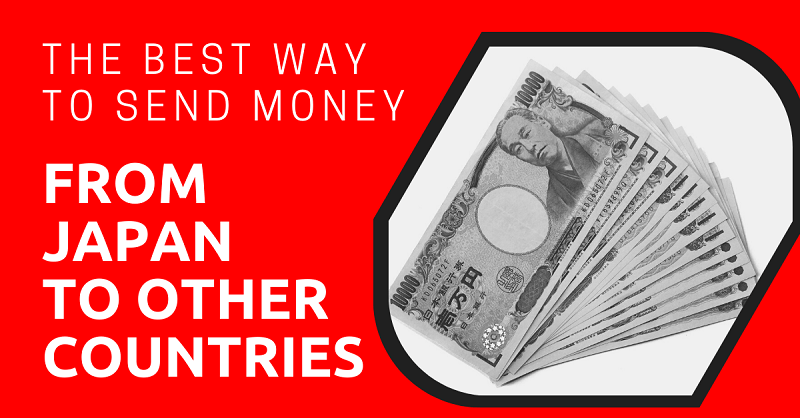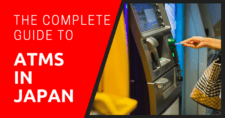
There are many ways to send money from Japan to banks on other parts of the globe. In fact, nowadays your choices are almost limitless.
But as your number of choices increases, so do the chances that you’re going to pay more than you need in transfer fees and hidden exchange rates.
This guide, then, will show you which of the more popular money transfer service options is the cheapest, so you can get the most money on the receiving end.
However, if you’re looking for a quick snapshot of the cheapest ways to send money from Japan, then check out Monito. Monito scours the internet for the cheapest transfer methods available on any given day, saving you both time and money.
This article will take approximately 8 minutes to read. Don't have the time right now? No worries. You can email the ad-free version of the article to yourself and read it later!
Disclaimer: This article may include links to products or services offered by ExpatDen’s partners, which give us commissions when you click on them. Although this may influence how they appear in the text, we only recommend solutions that we would use in your situation. Read more in our Advertising Disclosure.
Contents
Good to Know
Before you choose which money transfer service provider you’re going to use to transfer money out of Japan, it pays to find out about transfer fees, exchange rates, and transfer speeds.
Knowing these things ahead of time will save you time and money and help you pick the best service provider for your needs.
So, let’s delve deeper into each of these three important topics.
Transfer Fees
The first thing to consider when transferring money out of Japan are the transfer fees you have to pay.
These transfer fees come in three forms: fixed fees, percentage fees, and combination fees.
We’ll look at each one in more detail in the following sections.
Fixed Fees
Fixed fees stay the same no matter how much you transfer out of Japan, which means that when sending large amounts of money, you should always use a money transfer service provider that charges fixed fees.
In this case, you won’t have to worry about getting hit with hefty percentage fees on large transfer amounts, but instead pay a fixed fee that is quite reasonable.
What’s more, if you have a PRESTIA or Sony Bank account in Japan, you won’t be charged any fixed fees. But keep in mind you will pay for your international transfer through reduced exchange rates.
Percentage Fees
Another type of fee you’ll come across when sending money from Japan is a percentage fee, which changes with the amount of JPY you transfer out of the country.
It’s hard to find a bank in Japan that only charges a percentage fee, as most of them either charge a fixed fee or combination fee.
So, if you’re looking to take advantage of percentage fees on large transfers, you should look at some of the online money transfer service providers.
Combination Fees
Combination fees are when an online money transfer service provider or bank charges both a fixed fee and a percentage fee for international transfers.
Wise and XendPay use this method, as do some Japanese banks.
Both Rakuten Bank and MUFG Bank charge a percentage fee of 5 percent and a JPY1,500 fixed fee for international money transfers leaving Japan.
Now that we’ve gone over fixed fees, let’s look at exchange rates.
Exchange Rates
When sending money from a bank account in Japan to a bank account in another country, make sure the money transfer service provider is offering mid-market exchange rates, or as close to it as possible.
You can use XE.com to find the latest mid-market exchange rates.
Out of all the online money transfer service providers that people use, Wise offers the best mid-market exchange rates.
With that said, it doesn’t mean Wise will always produce the most money on the receiving end. There’s a lot more that goes into the equation than just exchange rates, which we’ll cover in section on money transfer service providers.
Transfer Speeds
You also want to think about transfer speeds when sending money from Japan to another country.
If you’re not in a rush, you can use Wise or XendPay to make a transfer, as they send the money anywhere from within minutes to days.
If you’re in a financial emergency as need the money instantly, you can use Western Union, but be prepared to pay for the speed.
Money Transfer Service Providers
Let’s look at some of the more popular money transfer service providers and the fees they charge.
XendPay
If you’ve never sent money from Japan to other parts of the world, then XendPay could be a first good choice.

XendPay offers free transfers on the first GBP you send each year, although they still take 2 percent to 3 percent of the mid-market exchange rates as a fee.
After you reach your GBP2,500 limit, you’ll be susceptible to XendPay’s regular fees, which fall anywhere between 0.41 percent to 1.5 percent.
Considering all of this, a first-time JPY100,000 transfer from Japan to the U.S. would yield you US$784 in your American bank account, making XendPay the cheapest money transfer service provider on this list.
Wise
Wise is the second cheapest money transfer service provider on this list. For a JPY100,000 transfer from Japan to the U.S., you’d receive US$777.89 into your American bank.

You can choose between two payment options when sending money out of the country.
- bank transfer – no extra fees
- debit card – JPY3,054
Additionally, Wise charges another JPY660 fee to send money from Japan to the U.S.
To find out more about how you can save money on your next international transfer from German, check out our in-depth review of Wise.
Bank Transfers
When sending JPY100,000 from a bank in Japan — for example, Rakuten — to a bank in the U.S., you pay 5 percent in fees in addition to a fixed fee of JPY1,500.
After fees, you get US$752.70 in your American bank account.
There are more cost effective options on this list, even if you plan to send larger amounts of Japanese Yen to the U.S.
Usually, the more money you send through a bank, the more money you save on international transfers. However, that is not the case in Japan.
The average 5 percent fee means your transfer costs are respective to the amount you send. In other words, they will increase as you send more money.
Western Union
If you use Western Union to send JPY100,000 from Japan to the U.S., you wind up with US$776.04 in your American bank account.

This means Western Union is slightly more expensive than Wise or XendPay but still cheaper than traditional banks.
Looking at the fee structure, Western Union charges a fixed fee of JPY250 and surprisingly doesn’t take a percentage of the mid-market exchange rate like they usually do for most currencies.
Having said that, if you have a financial emergency you can use Western Union to send money from Japan to the U.S. and enjoy the same rates as some of the cheapest online money transfer service providers.
The Best Method to Send Money from Japan
Using a JPY100,000 transfer to the U.S. as an example, XendPay comes in as the cheapest way to send money from Japan.
| Method | Speed | Send | Receive |
|---|---|---|---|
| Xendpay | 1 to 3 Days | JPY100,000 | US$784.00 |
| Wise | 1 to 3 Days | JPY100,000 | US$777.89 |
| Western Union | 1 to 4 Days | JPY100,000 | US$776.04 |
| Rakuten Bank | 2 to 3 Days | JPY100,000 | US$752.70 |
Now, on to You
That wraps up our guide on sending money from Japan.
Hopefully by now you have a good understanding on what to look for when sending money out of the country, so you can get the most on the receiving end.
Also, don’t forget to check out Monito before you send money anywhere, as it will show you the cheapest transfer method on any given day.






